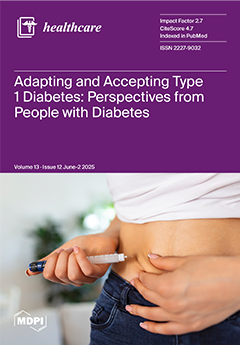Background/Objective: Sustained exercise adherence among older adults is essential for healthy aging but remains challenging due to psychological, social, and economic barriers. This study aimed to investigate how perceived exercise barriers, financial burden, constraint negotiation mechanisms, and social support influence exercise adherence among
[...] Read more.
Background/Objective: Sustained exercise adherence among older adults is essential for healthy aging but remains challenging due to psychological, social, and economic barriers. This study aimed to investigate how perceived exercise barriers, financial burden, constraint negotiation mechanisms, and social support influence exercise adherence among adults aged 50 and older by integrating behavioral economics, constraint negotiation theory, and social cognitive theory.
Methods: A cross-sectional survey was conducted with 1000 community-dwelling older adults in South Korea using a convenience sampling method. Participants were recruited from community centers, senior welfare facilities, and public health clinics in urban and suburban areas. Data collection was conducted between 11 January and 21 April 2024, using both online (Qualtrics) and offline (paper-based) surveys. Participants completed validated instruments measuring perceived exercise barriers, financial burden, constraint negotiation mechanisms (including financial management and social support mobilization), perceived social support, and behavioral exercise adherence. The final sample used for analysis included 974 individuals (mean age = 60.24 years,
SD = 6.42). Structural Equation Modeling (SEM) was used to assess direct, mediating, and moderating effects. Additional exploratory analyses (ANOVA and
t-tests) examined subgroup differences.
Results: SEM results showed that perceived exercise barriers (β = –0.352,
p < 0.001) and financial burden (β = –0.278,
p < 0.001) were negatively associated with exercise adherence. Constraint negotiation mechanisms (β = 0.231,
p < 0.001) and perceived social support (β = 0.198,
p < 0.001) were positively associated. Mediation analyses revealed that constraint negotiation strategies partially mediated the relationships between perceived barriers and adherence (indirect β = 0.124) and between financial burden and adherence (indirect β = 0.112). Moderation analysis confirmed that social support buffered the negative effects of financial and psychological barriers.
Conclusions: Exercise adherence in later life is shaped by the dynamic interplay of structural constraints, behavioral strategies, and social reinforcement. Interventions should combine financial support with socially embedded structures that promote behavioral planning and peer accountability to sustain long-term physical activity among older adults.
Full article






